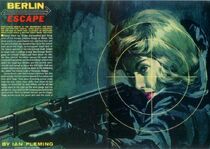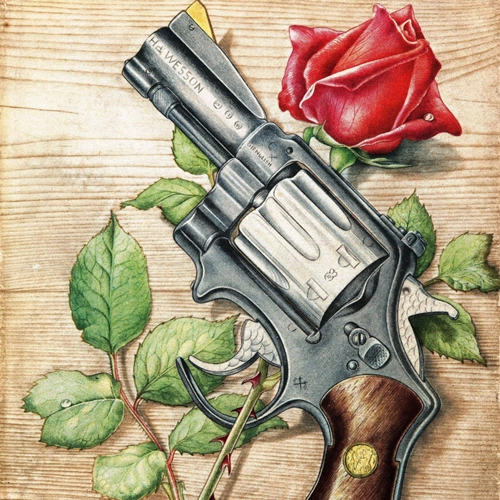
| |
| Author: | Ian Fleming |
| Publication date: | 1962 |
| Published in: | The Sunday Times |
| Alternate title: | "Berlin Escape" "Trigger Finger" |
| Collected in: | Octopussy and The Living Daylights |
Publication order
| |
| Previous: | Next: |
| "Risico" | "007 in New York" |
"The Living Daylights" is a short story written by Ian Fleming featuring his fictional secret agent James Bond. It was included in the 1966 short story collection Octopussy and The Living Daylights.
Fleming originally titled "The Living Daylights" as "Trigger Finger", although when it first appeared, in the The Sunday Times colour supplement of 4 February 1962, it was under the title of "Berlin Escape". It was also published in June 1962 issue of the American magazine Argosy under the same name.
Plot
James Bond is on the famous Centaury Firing Range at Bisley, where he is testing a rifle with an infrared scope. The rifle he is using is an American made .308 caliber International Experimental Target rifle. A five shot magazine that should not produce any fade at five hundred yards has replaced the usual single bolt action. The Chief Range Officer is pleased with the results, as Bond is consistently getting bull's-eyes even in the fading light.
When he is finished, Corporal Menzies comes from the Pavilion of the Gun Club and dismantles the rifle and its stand. Bond tells him to tell the armourer that it is a very fine weapon, and when the Corporal says he is finding his own way back to London, he wishes him goodnight.
Bond’s been assigned by M to serve as a counter sniper for an escape attempt by a British agent trapped in East Berlin. He's smuggled out a message telling them when and where he'll cross into West Berlin, but it was intercepted by the KGB and they've sent Trigger, the codename of their top sniper, to kill him first during the crossing.
Bond travels to West Berlin, where he settles in to a small apartment overlooking the crossing site. He works with a Secret Service desk jockey stationed in Berlin, Paul Sender, as his liaison and spotter, whom he dislikes, he doesn't like the mission to shoot somebody in cold blood, and waiting the several days of the escape window wears on him.
What he does like is the blonde cellist in the orchestra that sets up in the East Berlin building Bond expects the sniper to use each night to practice, developing a long-distance crush on her as he observes her each night.
On the last night, the agent finally begins his escape. Bond spots Trigger at the window, and is shocked that Trigger is the blonde cellist. She just starts to fire before Bond shoots the rifle out of her hand. Sender notices that Bond held his fire briefly and deliberately failed to complete the mission of killing Trigger, and promises to write him up for it. The sullen Bond insists that he's broken Trigger's nerve for the business anyway by scaring the living daylights out of her, but tells Sender to write him up, and he hopes he loses his job anyway.
Background
The method of using the noise of the orchestra to cover the crossing over no man's land, was inspired by Pat Reid's escape from Colditz prisoner of war camp, with two escapers having to run across a courtyard under the cover of the noise from an orchestra
As background research to the story, Fleming corresponded with Captain E.K. Le Mesurier, secretary of the National Rifle Association at Bisley for information and to correct some of the more specialist areas of knowledge required for sniper shooting.
